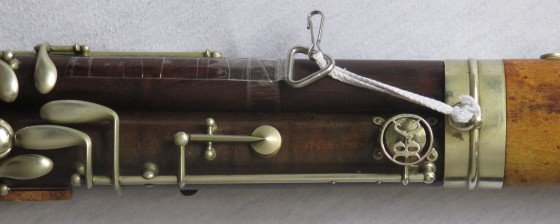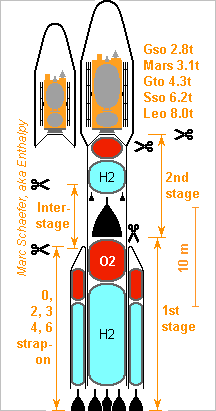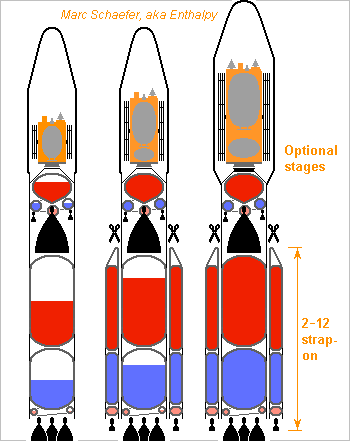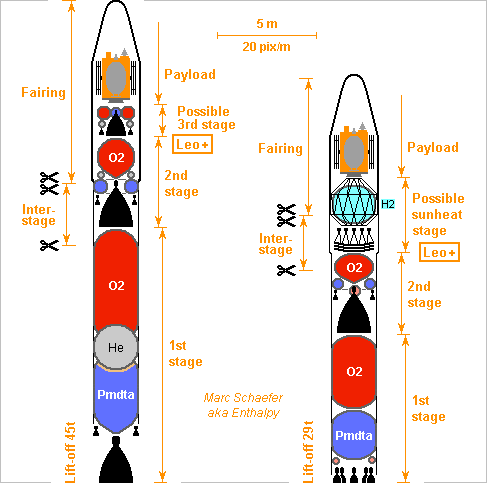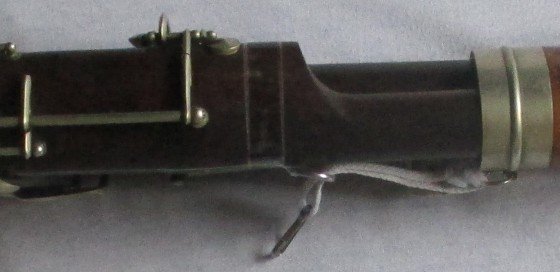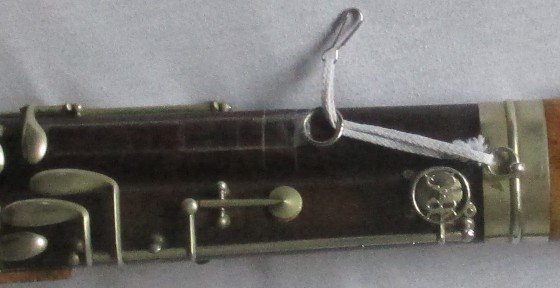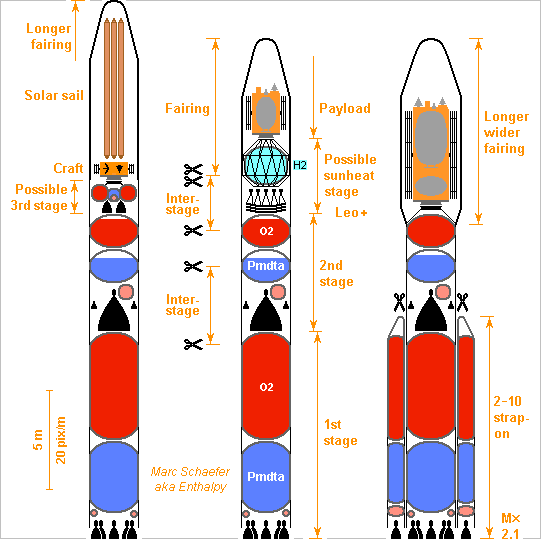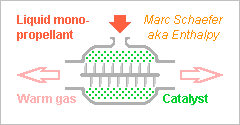-
Posts
3887 -
Joined
-
Last visited
-
Days Won
1
Content Type
Profiles
Forums
Events
Everything posted by Enthalpy
-
Despite being a labrophone (a brass instrument), the cornetto is made of wood, its mouthpiece too wikipedia To resemble historical instruments, the wood is usually European and imperfectly water-resistent. Condensation would swell the wood at the bore and split the body. Common practice at ancient instruments is to impregnate the bore with linseed oil or an other siccative oil that reacts with air to make a solid water-repellent layer. Alas, siccative oils get toxic as they react with air to harden. It may have sickened the romantic painters, together with absinth. I worry for cornetto players who might impregnate the mouthpiece itself with linseed oil. An impregnated cloth is typically pulled from the narrow end of the bore, here the mouthpiece. This is especially acute for the mute cornetto, whose mouthpiece is integral to the body made of light-colour wood looking like beech, box, pear or cherry. Other cornettos have a mouthpiece of darker wood, possibly some Dalbergia that resists water. Alternative treatments: Use a non-siccative oil. Repeat the treatment often and forever then. Palm oil is solid. Squalane maybe. I mistrust (?) paraffin due to residual polyaromatics. Use a non-toxic varnish if this exists. Wax? Inject a polymer as a barrier layer, as is done for oboes. Needs tooling. Some materials for the mouthpiece, or for some mouthpiece insert concealed in the mute cornetto, or for the whole body: Ebonite. Turned like wood, well-known from single reeds. Dark. Exotic wood. Years drying, dark. Titanium. Stainless steel (nickel-free). Bronze. Or metal plated with Au, Pd, Rh... POM, PETP...? Light colours too. LCP is stiffer than most wood, some is allowed for food contact. Light colours too. scienceforums Marc Schaefer, aka Enthalpy
-
The 4d version of my bassoon balancer has arrived! The triangular ring shall spare the adhesive tape. The tape hasn't crept to the side after 90min practice. I found only thick big rings. The adhesive tape showed no wear nor tear after two weeks at the round ring, but I wanted to move the ring sidewise anyway. Marc Schaefer, aka Enthalpy
-
The Vinci engine exists already and is rumoured to be affordable, so here's a launcher inspired by Ariane 4 using Vinci only. The normal Vinci expander cycle, no bleeding here. 4 Vinci alone lift the launcher because the tanks aren't full. 0, 2, 3, 4 or 6 strap-on boosters add propellants and let fill the first stage. The propellant masses are: strap-on 5953kg each, first stage up to 51038kg, second stage up to 11250kg. The strap-on and first stage Vinci have a D=1.4m niobium nozzle extension for 4393m/s and 173kN (vac). A D=0.51m ablatively cooled, RD-0120 styled, jettisoned insert limits the expansion to 0.8bar for 3789m/s and 150kN (vac) or 3269m/s and 129kN (sea level). If hydrogen doesn't receive enough heat, the actively cooled divergent segment could be longer and narrower (double, triple bell?), or the chamber longer, or some exchanger be added. The second stage Vinci has D=3.0m for 4649m/s and 183kN. The dry masses are: Vinci 280kg (?), rest of the stages 360kg (each strap-on), 3062kg (first), 675kg (second). 60kg per ton of propellants result from my ballon-in-truss design scienceforums and later The widely tunable performance is given for 6 strap-ons. Hydrogen makes the same stacking efficient from Leo to Gso. Little dimension tuning, like 4.2m body instead of 4.0m, would enable 12 strap-ons, for about 1.6* the performance. The D=4.1m fairing is from Soyouz, D=5.4m from Ariane 5 and competitors, which might suffice for my sunheat engine starting with 8t ant Leo. Marc Schaefer, aka Enthalpy
-
I have used a dozen times isopropanol to clean one bassoon reed and to disinfect it from bacteriae and virus. This reed is very old and it becomes dull and unresponsive when a biofilm develops inside. Isopropanol eases much the mechanical removal of this biofilm (some bassoonists use a pipe scraper), often no mechanical action is needed. I give some drops in the reed at the bocal end over my usual plastic soaking box, then I soak and shake the reed for about 1min in the flown isopropanol. The cleaned reed becomes responsive again. Could the biofilm be the cause of reed ageing? Isopropanol, or isopropyl alcohol, is what gives hospitals their odour. It must be concentrated >70% but not pure. Its deadly dose is half that of usual alcohol, so rinse the reed. Concentrated usual alcohol (ethanol, ethyl alcohol) should work identically; I'd stay away from methylated spirits, whose denatonium tastes so badly. I haven't tried vodka &co, normally it's 40% ethanol so its antiseptic action isn't guaranteed. My bassoon reeds are covered with wax to be airtight. Perhaps the more usual varnish dissolves in isopropanol and ethanol. Marc Schaefer, aka Enthalpy
-
At least on its website in 2021, Isar Aerospace alleges that its Spectrum launcher will have 9 engines at the first stage, identical to the second stage engine with a shorter nozzle. But if I reveal that the Soviet N-1 did it before SpaceX' Falcon 9, maybe it wasn't such a fabulous idea after all, and we can consider other options. Ariane 4 too used the same Viking engine at the first and second stages with different nozzles. But it had only 4 engines at the first stage, which wasn't filled in this configuration. As strap-on boosters added up to 4 Viking, the first stage started full. O2 instead of N2O4 saves Ariane's third stage. On light and low missions, Ariane 4 cost 5 engines, not 9. On heavy or high missions, the strap-ons were discarded when their thrust became unnecessary and their tanks empty. The central stage was more efficient by ending lighter with fewer engines and smaller tanks. 4 nozzles at the first stage can be wider than 9 as they should have atmospheric inserts. Widening from 0.45m to 0.8m gains at once 23s Isp, wow! Around 10% more payload. 4 or 6 engines at the first stage? Only a more detailed analysis would tell. Engines slightly stronger than in the 1+9 configuration help also push the second stage when it starts early, but they must throttle more at the end. How many strap-on locations? Room is plentiful, more locations allow a wider adjustment. 6 evenly spaced locations balance the thrust of 2, 3, 6-2 and 6 strap-ons. 12 locations balance 2, 3, 4, 2+3, 6, 12-2-3, 12-4, 12-3, 12-2 and 12 strap-ons. 4 and 8 are less flexible. With 12 strap-ons, especially if the first stage ignites or reignites later, I expect the second stage to reach efficiently Gso and the planetary transfers, and the first stage may reach Leo marginally. By the way, I doubt that Leo and Sso suffice to constellations. All companies have abandoned propellant transfers from the strap-ons, but they would bring performance. Marc Schaefer, aka Enthalpy
-
Copying 20 years later what US companies did is a safe method to lag behind. European companies and administrations now want reusable launchers that burn methane, despite the advantage of methane is doubtful, and my sunheat engine makes a bigger difference scienceforums RP-1 "kerosene" is safer than methane and efficient too, other less flammable propellants (Pmdeta, cis-pinane...) are cheap and available, cyclopropane and ethylene are produced industrially and they outperform methane. Methane keeps the cooling jacket cleaner for reuse, but so does oxygen. By the way, cooling with oxygen was experimented, an old Nasa report exists. ntrs.nasa.gov The other part to be cleaned is the turbine, where a fuel-rich kerosene-oxygen gas generator cokes horribly. But fuel-rich methane-oxygen soots too, and SpaceX downgraded it so much that their full-flow cycle at the Raptor is but better than the oxygen-rich staged combustion alone. If an oxygen-rich flame is needed, no fuel soots. To put 1t in Leo, I claim pressure-feeding is much cheaper than any reused pump, and it's easier to reuse. I compute with helium at each propellant's temperature because wobbling may cool down a warm pressurizing gas (did that crash the latest Starship? "Insufficient pressure in a tank"). Then, cold methane needs a heavy helium tank that makes the stage less efficient than kerosene, while amines need less of cold oxygen to get an extra advantage over hydrocarbons. Marc Schaefer, aka Enthalpy
-
My French bassoon can emit the 8th mode of very long fingerings, where the main closed-to-open transition is near the bell. Not even the very sharp turn at the boot prevents it. Just one added open hole suffices, despite the tone holes design is inefficient for that purpose. So my piano-like systems might have their main holes much lower at the air column. The second mode beginning around C#, rather than around F# on a bassoon, would enable fingerings identical to my piano-like oboe two octaves lower, big advantage for musicians. The bassoon would have fewer but more complicated keys, none at proximal phalanges, and longer shafts. I hope my system B opens enough lone holes to emit very high notes on long fingerings. The variants C, D, E, F help further. One clear drawback is that long fingerings sound differently. About a fourth, C# to F, would be played on second mode, with nicely soft but banal timber, while some compositions seek the distinctive sound of the throat notes, with short fingerings high on the first mode. Marc Schaefer, aka Enthalpy
-
A stage's vernier engines and the main engine at the next stage are about equally strong, so maybe they could use the same chamber design, with different nozzle extensions. Tilting the verniers to push towards the centre-of-mass would direct their plume away from the main nozzle. Marc Schaefer, aka Enthalpy
-
The right pinkie 4R worried me a bit because it closes 3 covers on my piano-like bassoon fingerings, but so does it on the bass clarinet to low C - perhaps even 4 covers if I see properly. The isolated holes are small so their covers need little force.
-
Here's a direct visual comparison for a launcher, pressure-fed or pumped by a gas generator cycle. Masses and volumes are directly scaled, neglecting subtleties, /1.8 from the Jan 04, 2020 drawing here, and *2.5 from the "Tronador" scienceforums scienceforums so both put 1t in Leo and achieve Sso in two stages. Both have a D=2.3m body and a D=2.5m fairing. Smaller chamber pressure and heavier tanks make the pressure-fed launcher one and a half times as heavy and tall as the pumped one. I claim it's nevertheless a better "spectrum" launcher, because it's not as extremely difficult for a new company, and it's cheaper to launch. 4t low-tech tanks of Maraging steel shall cost 100k€. The light tanks cost probably more. 5t more Pmdeta add for instance 20k€. 0.3t helium cost roughly 6k€. The amount is available. 10 turbopumps cost obviously much more than the 100 or 150k€. Reliability also means money. These figures tell that only big launchers can pay technology by saving mass. A pressure-fed launcher being as sturdy as a boat, reusing it after splashdown is credible with or without sailing back, provided this saves money scienceforums Variants: The expansion cycle differs little from the gas generator. Safety, reliable restart? Diazetidylcyclopropane saves some mass over Pmdeta, it's a detail. Production? Graphite tanks do save good mass over steel. Cost? Electric pumps are excellent, nearing gas generator performance, much simpler, reliable. Marc Schaefer, aka Enthalpy
-
An oxygen expansion cycle achieves some 140bar too. Saving the monopropellant flux, it gains 13s over a gas generator cycle. But can it restart as reliably as the pressurized monopropellant gas generator does? The same 19MW as from elongated Vinci's cooling jacket would heat 27kg/s oxygen from 90K to 280K. This pushes 145kN, but the Aquila engine announces 94kN, and 40kN would suffice, so the chamber's aspect can be normal, further shrunk by the hotter flame. Heating the oxygen more would increase the pressure, but the engine is more difficult to start, and throttling may overheat it. 2:1 oxygen pressure drop extracts 47kJ/kg enthalpy. About 2.7:1 would optimize the chamber pressure, but I didn't iterate. Oxygen isn't far above its critical point, so more data would improve over mine at 100bar only. 79% and 74% efficient turbine and pumps bring 253:100 oxygen:Pmdeta to 340bar and 160bar. The cooling jacket with many vertical inlets and outlets shall drop to 320bar, the turbine to 160bar, and the injectors to 140bar. ========== Single staged pumps and turbine are compatible with common ~230m/s azimuthal speed. D=47mm and D=39mm centrifugal pump impellers would suffice for the 94kN engine, but the axial turbine needs more area preferably at lower speed, and D~30mm pump inlets would need booster pumps to avoid cavitation. Centripetal turbines offer a good outlet area, doubled if symmetric. Usual at car turbochargers, absent from rocket turbopumps. Centrifugal force is no worry here. Bigger rotors seem better, like D=64mm at the turbine, and hopefully axial pumps looking like a feeder without the usual centrifugal stage. Easier to machine. D=70mm inlets need only 4m/s, and tanks can provide the 0.1bar above vapour pressure. Throttling and shutoff impose high-temperature alloys. ========== The pressure achieved by the expansion cycle depends on the relative volumes of oxygen and fuel rather than their sum for the gas generator cycle, so the fuel comparison differs slightly. I believe bicyclobutane, spiropentane and diazetidylcyclopropane aren't still mass-produced. Diazetidylcyclopropane, pmdeta and farnesane are less flammable. +5s 138bar Bicyclobutane +2s 132bar Ethylene +2s 139bar Spiropentane +1s 141bar Cyclopropane Ref 131bar Methane -3s 143bar Diazetidylcyclopropane -5s 140bar Pmdeta -7s 144bar Farnesane, ramified alkanes Isp is not everything. Big heavy methane tanks make the launcher heavier and bigger. Marc Schaefer, aka Enthalpy
-
Isar Aerospace tells Spectrum's fuel is a "mixture of light hydrocarbons", and at least on astronautics forums, a recurrent frenzy is Mapp and Dmapp, an equilibrium mixture of mainly propyne and allene, optionally diluted in propane. Seducing heat of formation. Just in case: Mapp and Dmapp can't cool the walls of a combustion chamber. Allene (propadiene) polymerizes very easily, heat and pressure would do it even with a stabilizer. The resulting polymer insulates the wall until it bursts. That's why rocket fuels are painstakingly purified of all multiple bonds, which distinguishes rocket "kerosene" from Diesel oil. Propyne (methylacetylene) is known to detonate without oxygen above +95°C, which will occur at some location and time in an engine, for instance when shutting it off. Worse: liquid propyne is known to detonate too. Even if cooling the walls with the oxygen (which would be new), I wouldn't trust Dmapp. Ethylene isn't a huge polymerization and detonation hazard like allene and propyne are. ========== I suggested a pressure-fed launcher "Tronador" for 400kg in Leo there scienceforums multiply each dimension by 1.36 and you put 1000kg in Leo. It must be the cheapest launcher for 1000kg, by very far. Two stages as well, slightly heavier but not bigger, no pumps at all, thick strong steel. "Only" combustion, fluids, and difficult enough steering. Perhaps even reusable. Strap-on boosters can modulate the payload and may serve at other launchers. A third stage is easily scaled from the others. I described lighter graphite tanks elsewhere, but for 1000kg, steel is intuitively cheaper. That would be a more reasonable first project for a new company lacking experience. Remember: SpaceX hired experienced engineers from old companies. To simplify further, each stage can have a fixed main nozzle plus four verniers as Soyouz has at the RD-108. Then, each vernier needs only one rotation axis, where the propellants can arrive just with seal rings. One big worry less. Four main nozzles would do that too, but at the last stage, the verniers tune also the orbit finely, orient the launcher and its payload, and change slightly the orbit between different satellites. I described igniters elsewhere, for instance using a Diesel glowplug. Marc Schaefer, aka Enthalpy
-
I estimate payloads for Spectrum double what Isar Aerospace claim. Comparison confirms it: spacex.com the engines and tanks are 1/10th of Falcon, so a decent performance is 2.3t in Leo, not 1t. Make the engines half as strong to avoid competition against Vega? Note the hydrogen tank I drew in a D=2.5m fairing is for 1t payload, so the diameters should remain as the tanks shrink. ========== The igniters could use the same decomposition chamber as the turbines do, if they draw little gas. ========== I estimate an optimum chamber pressure for O2 and Pmdeta with 86% peroxide gas generator. Pessimistic assumptions taken from the old RD-170: Injectors leave 88% pressure in the main chamber Cooling jacket wastes no pressure Turbine 79% efficient Pumps 74% efficient Gas expansion from 20bar to 1bar, hence light pressure tanks. Gas gets 1240m/s, single turbine stage. The best chamber pressure is then 155bar, but 125bar wastes only 0.5s and 110bar 1.0s. The lost peroxide wastes 14s, so if an expander cycle achieves over 64bar, it beats the gas generator cycle. But I proposed a good way to restart the gas generator cycle. I suggested multiple inlets and outlet to reduce the pressure drop in a cooling jacket scienceforums provided that cooling is efficient under the manifolds. Marc Schaefer, aka Enthalpy
-
4c definitive version of my bassoon balancer. Easiest to build and adjust. Time will tell if it's the most durable. 4 plies of adhesive tape parallel to the tenor joint hold a ring. I superimposed the 4 plies first, holding the first ply between a desk's edge and my fingers. The tape needs some length to hold on itself near the ring. Several turns of a second tape around the joint holds the first tape against the joint as previously. Duct tape (Gewebeband, toile adhésive) crept and began to tear at the edges. Surgical tape (Pflaster, sparadrap) crept, and the European tan looks silly on African wood too. Plain office adhesive tape is best up to now. Duct tape and surgical tape crept at a D-shaped ring until holding at a corner, so a round ring is less bad. Do use the shoelace that holds at the boot! It saved my instrument a dozen times. Marc Schaefer, aka Enthalpy
-
Hi Curious Layman, thanks for your interest! A patent costs a fortune (application +annual fees *many countries) and is only a proof you can show to a judge. If negotiating with a small company, an inventor has some chances to win a trial, so he can get paid for an invention or prevent its use. Against a multinational, procedure ruins an individual inventor before he gets the first cent. So big companies just steal the idea, neglect any patent, and save the money. I know this concretely: at a multinational employer, two colleagues and nevertheless friends worked full time to analyse the weaknesses of external patents and find ways to circumvent them, while a complete division sought how to come best out of trials, and more people sought how to resolve the cases outside legal procedures. You may hear and read about individual inventors getting rich from their ideas and patents, but this is truly rare. Nearly all lose a bunch of money in patents before giving up. ========== Creating a company: I tried long ago, after building the Sara satellite with friends in a club. It failed, and we got discouraged. More recently, I considered building the sunheat engine in Luxembourg with the help of a governmental funding. Thinking more at it, I saw basic flaws in the activity model: development costs <1M€, but the in-space proof costs 6M€ and may very well go wrong, while the first customers probably need 5 years to decide and longer to pay. I'd have put much work in a company that would fail. That's why I finally described on this forum how to develop the sunheat engine. Basically, I describe for everyone ideas I don't plan to develop by myself, mainly because they cost too much. I keep very few for myself, like some music instruments. Yes, I'd like to live from my inventing and engineering activity, for instance at a company. France makes that more difficult. I could work once outside France, it was in Bavaria.
-
Launchers don't try to maximize the energy efficiency, because their energy input is cheap. Take a 60M$ launch that puts 6t payload in transfer to geosynchronous orbit and burns 600t propellants, among them 200t fuel. At 5$/kg, the fuel costs 1M$, not a driving factor. But if a better fuel achieves 10% more payload in GTO, the launch sells for 6M$ more, which affords 30$/kg fuel more. Better: you can keep cheap fuel at the first stage, and pay a better fuel for the 40t of the second stage or the 8t of the third stage, which justify more expensive fuels. This needs easily mass-produced compounds, but things like cis-pinane (byproduct of the paper industry) or permethylated DETA are easier to purchase and possibly cheaper than rocket "kerosene", a special compound different from aeroplanes kerosene, heavily processed. If they bring 2-3s more specific impulse, to me the choice is clear. This comparison holds when oxygen is available for free from the air. In a launcher, it must be carried and accelerated by the exhaust. So the advantage of hydrogen is less huge in a launcher, while nitrogen produces heat by making N2 without any oxygen. The reaction enthalpy per mass unit of products is a good indicator for rocket propellants, though not sufficient. Hydrogen is the most efficient realistic rocket fuel, but it's difficult to store and use. Besides its difficulties known from chemistry or engineering, it also needs big tanks that add to the dead mass of a stage. Its pumps often demand 2 or 3 stages, whose flux straighteners are much more complicated than a scroll for 1 stage; bearings cooled by liquid hydrogen are nothing obvious neither. The turbines often demand 2 stages with vanes rather than a scroll, and temperature lets put the turbine hang outside the actively cooled bearings. Precooling of all components, and good insulation, is a big step more difficult with hydrogen than with methane or oxygen. This lets SpaceX use "kerosene" or methane even for difficult missions, and stay away from hydrogen. But if a fuel is dense, 1 pump stage can suffice, and "kerosene" or denser booze can even share the shaft and turbine with the oxygen pump, saving much money. A fuel liquid at room temperature also simplifies the engine and tanks. Besides the engine simplicity, denser propellants can also receive a higher pressure to enter the chamber, as the pumping power is already optimized. This gives spiropentane and cyclopropane a higher exhaust speed than methane, while at identical expansion ratio in the nozzle, methane would be as good. Lighter tanks make the rest: the launcher is lighter and smaller. ========== By using measured heats of formation of simple amines and running a rocket propellant software to compare with alkane homologues, one observes 3s advantage for amines. But I'd like to find arguments more convincing than that.
-
Hi Studiot, thanks for your interest! Where the propellant makes a small fraction of a vehicle's mass, the momentum is fully relevant. There, more propellant brings you further or faster. But a launcher's mass is essentially propellant, plus very little tank and engine and payload mass. More propellant pushing on more propellant wouldn't increase the speed. This suggests that momentum doesn't suffice. As the rocket's mass (or rather the stage's mass) varies much while it uses propellant, the proper equation is DeltaV = Ejectionspeed * Log (Initalmass / Finalmass), called Tsiolkovski's equation and because the nearest orbit costs around 9500m/s but propellants achieve 3000-4600m/s ejection speed, launchers need a big ratio Initalmass / Finalmass. This implies that all dead mass must be small in a launcher, and even then, they consume a strong part of the final mass, leaving less for the payload. Stages improve that by throwing away much dead mass, but even good designs used in a favourable mission waste easily 1/4 of the final mass for each stage. Put together, the ejection speed (or divided by g=9.806m/s, the specific impulse Isp in seconds - plus subtleties if a secondary flux is lost) is all-important for a launcher. Already the Log would let 1% more Isp gain 3% on the final mass, but on the payload mass it acts even more. So the ejection speed rules, and designers make big efforts to improve it.
-
More people think at the sunheat engine: the Johns Hopkins University's Applied Physics Laboratory designs a craft and mission to reach the heliopause in 25 years, nice popularmechanics.com - wired.com - jhuapl.edu I just hope that their readers won't remember APL's sunheat engine design as the only possibility. The APL's design works at 3 solar radii. A concentrator lets my common design work up to Saturn. Less good materials limit the temperature at APL's engine. They claim 600s theoretical specific impulse, while only-tungsten plus low hydrogen pressure give my design 1200s. Stronger Oberth effect nearer to the Sun is an advantage for APL's mission, but my engine and mission reach the heliopause in 10-15 years scienceforums - scienceforums - scienceforums
-
Figures, drawings and opinions about a body wider than the 1.8m announced for the Spectrum launcher. At arbitrary 100bar chamber pressure, and including some 7s lost in the peroxide gas generator - a expansion cycle may be more effective. Mass and speed estimates tell me payloads much heavier than 1000kg from 53t at lift-off, with nine 1st stage nozzles reduced now to D=0.5m for 0.25bar on a D=1.8m circle, with D=0.27m inserts at sea level. The D=1.8m fairing wouldn't serve then. My sunheat engine is the next big thing scienceforums and already 700kg hydrogen fit in D=2.5m as depicted but not properly in D=1.8m. But deep space missions could even carry 1200kg hydrogen, which needs a fairing wider than D=2.5m. By the way, the sunheat engine needs trickle hydrogen at the launch pad under the fairing, sorry for that. Strap-on boosters can multiply the lift-off mass by 2.1 with little development, and then the fairing must be wider than D=2.5m and longer. The two stages reach marginally a transfer to Gso, Moon, Mars, Venus - hence the bigger tanks at 2nd stage. A true 3rd stage starting from Leo reaches nicely Gso, the lunar surface, transfers to Mars, Venus and Jupiter. Then the launcher gets taller. My hectares solar sail makes impressive missions scienceforums and it fits nicely in Spectrum's mass capability, but it needs a long fairing for the telescopic booms. Longer and wider bodies and fairings, heavier payloads increase the bending loads that dimension small launchers. I feel a D=1.8m body too difficult here. ========== If ending 0.2mm thin, a nozzle extension of niobium from D=0.8m to D=1.6m weighs 15kg and gains 150kg in orbit. It needs a light interstage. A four-chamber engine is a different option. Light interstages are easily made of a truss. A truss can also hold superinsulated light balloon tanks as I described scienceforums which I believe Ariane 6 has adopted for the upper stage, and SpaceX seemingly too for the BFR. Marc Schaefer, aka Enthalpy
-
Thoughts about a catalytic decomposition chamber for a monopropellant, hydrogen peroxide or other. Strongly inspired by the stone-old RD-108 design lpre.de see there after the chambers and the turbopump. Google Translate may help. Rather than loose coarse grains of catalyst in a sieve, I'd have a honeycomb winding of wire sintered together. It's extremely robust: I used some, of stainless steel of several diameters, as a filter for air at 200m/s. Maybe it's a refractory metal or alloy here, or a ceramic. Fine wire gets faster hot and offers a big surface to deposit the catalyst on, maybe iron subsequently oxidized, or some transition metal. Radial flow gives a wider shorter path to reduce the pressure drop and the forces on the catalyst. It spares the heat losses at most chamber's walls. Optionally, two gas outlets as sketched shrink hence lighten the chamber. A helix at the gas flow can let the gas rotate to eject residues of liquid and foam on the catalyst. Then the gas outlets can be scrolls. Seemingly better: the helix or helices could rotate freely. The gas accepts smaller outlets, and the helices eject the liquid better. Maybe ceramic ball bearings can operate under these conditions. Marc Schaefer, aka Enthalpy Hi JC and Studiot, I'll be back!
-
In an amine reactant, nitrogen is present with relatively weak C-N and N-H bonds, sometimes N-N, while in the product it's the strong triple bond N#N. So nitrogen isn't a spectator, it's an actor of the combustion. The comparison is too close to tell by qualitative arguments. If taking real heats of formation for the fuels, the combustion of amines gives some 20m/s bigger ejection speed than the alkanes homologues. For hydrazines it's rather 80m/s bigger. Replacing an unstrained alkane by a string of cyclopropyls gains only 40m/s. Amines are easier to produce than alkanes. They often burn more smoothly. They may stink and emit more NOx. Hydrazines are being phased out. Amines need less oxygen, rarely an advantage. They are denser.
-
As an igniter, decomposed peroxide could get a bit of fuel in its injection recess at the main chamber to amplify the heat, then possibly some more oxidiser and fuel. I have no plan to evaluate the best chamber pressure when a monopropellant powers the turbine(s). 108bar is for sooting "kerosene" and oxygen at Merlin 1D+. Does a peroxide or guanidine gas generator outperform an oxygen expansion cycle? Two turbine stages, on one or two shafts, bring little more power. I see no excellent reason to want more pressure in the igniter monopropellant tank than in the main chamber after ignition. However, the igniter monopropellant can have a tank separate from the turbine monopropellant. A monopropellant safer than peroxide would be nice, but has research already achieved safe fast decomposition? How much experimentation will a new launcher company do? Peroxide is well known, even if the 3% pharmacy concentration gives wrong impressions. ========== Propellants, pumps, chambers... are much optimized for performance, but at the first stage, an over-expanded nozzle brings more with less effort. Take an engine that pushes 94kN in vacuum by expanding O2 and Pmdeta from 100bar to 0.7bar in a D=0.34m nozzle. Sea level pressure lets lose 9kN. Hardware that limits the expansion to 1bar at sea level gains very little thrust, but it allows wider nozzles that would be destructive or inefficient at sea level. D=0.60m fits on a 2.0m circle (easier with a common set of actuators), for instance under a 2.5m body that matches one fairing and eases a wider one. Then, expansion from 100bar to 0.17bar rather than 0.7bar gains 29s at once. Acting over 2/3 of the first-stage time, it's as much as 10s Isp over the whole flight. Raising the chamber pressure from 100bar to 150bar everywhere would bring the same improvement from a much harder effort. The RD-0120 nozzle insert looks reasonable and has flown. Literature gives other designs. I described some at saposjoint.net, now closed. In a 2.5m body, the second stage's nozzle too can be wider. Again for 94kN in vacuum by expanding O2 and Pmdeta from 100bar: D=0,76m achieves 9.5kPa and Isp=362s (minus the secondary flux) while D=1.6m achieves 1.5kPa and Isp=387s, 25s Isp gained over more than half of the flight. Plansee and others sell niobium for the uncooled light nozzle extensions. The interstage truss can use aluminium tubes. There scienceforums I described a light and discarded shell around the truss. Zenit has a toroidal tank to save height, and rolls to guide the separated interstage around the wide nozzle. Good ideas should spread. Marc Schaefer, aka Enthalpy Hi JC, thanks for your interest! I come back very soon.
-
A gas generator cycle, as Spectrum's website claims to use, achieves about 80bar in the main chamber (for detuned kerosene+oxygen. Peroxide is more efficient). An expander cycle exceeds 94kN per chamber, as Vinci shows. The unmodified RL-10 has already run on methane. With a dense fuel, an expander cycle achieves a stronger chamber pressure than a gas generator cycle, and it and wastes no propellants at the turbine. It restarts naturally. I've already put figures on a cycle where oxygen cools the chamber and powers the turbine scienceforums The unit thrust exceeds much Aquila's 94kN meant for the Spectrum launcher, so the chamber can have a more usual aspect ratio than Vinci has. I keep uniform 184bar in the chamber as already computed for dense fuels (153bar with methane) but expand to 0.7bar in vacuum for the first stage. Cooling with oxygen enables safer or more efficient fuels: Flam Fuel Isp ========================================= !! Bicyclobutane 348 !! Ethylene 345 <<< !! Spiropentane 344 good Dicyclopropyldiazetidine 344 !! Cyclopropane 343 !! Azetidine 341 GOOD Diazetidylcyclopropane 339 GOOD Trispiroundecane 339 !! Methane 153bar 339 GOOD Pmdeta 338 <<< good Beta-pinene 336 GOOD Farnesane 335 good Cis-pinane 335 ========================================= The very safe, very cheap and mass-produced Pmdeta is as efficient as methane, while flammable fuels beat it. Dicyclopropyldiazetidine may be unhealthy. Denser fuels also shrink the launcher and save dry mass chemicalforums Production methods are known for some fuels, I suggested others elsewhere. Beware I'm no chemist. Marc Schaefer, aka Enthalpy
-
I believe electric pumps are the easiest to restart and to develop fo a small two-stage launcher, but if Spectrum keeps a gas generator cycle, options vary. Many gas generator burn the same propellants as the main chamber. It only seems simpler: Some other means must start the turbopump. A re-starting means must survive the normal operation. Spectrum targets many orbits per launch. Solid pyro hardly re-starts the second stage many times, liquid pyros are dangerous or difficult. Or the manoeuvres demand a separate attitude and orbit control. The turbine demands a strongly de-tuned mix of propellants, which soots or is very oxidizing. Adding water to a tuned mix adds complexity, as on the Viking engine. A separate monopropellant to feed the turbine is simpler and efficient. I propose to store the monopropellant under pressure in some vessel, probably of graphite fibres. Lighter than a pump for this volume. Then, a mere valve on the monopropellant starts the turbopump. Some monopropellant can also ignite the main chamber, once decomposed by a catalyst. Again mere valves. If desired, that monopropellant alone can control the attitude and orbit of the upper stage. Soyuz' RD-108 pumps the monopropellant, but its design is older than graphite fibres and good steel. The opposite choice is obvious today. If keeping the dangerous hydrogen peroxide, 86% mass concentration provides 650°C survivable by a nickel alloy turbine, good to ignite hydrocarbons, and its expansion from 100bar to arbitrary 5bar brings 1240m/s that fit a single turbine stage while 5bar provide the roll control to a single-chamber upper stage. Monopropellants outperform bipropellants detuned to limit the temperature at the turbine, as their gas molecules are lighter and attain a higher speed, providing more energy per mass unit. Hydrazine and MMH are more dangerous than peroxide, I exclude them. But maybe some amine mixes that contain guanidine or an aminoguanidine might replace hydrogen peroxide? See there scienceforums Methylamine decomposes over catalysts, but the reaction is unstable. Hotter reactions from guanidines hopefully proceed decidedly. Mixes of ammonium dinitramide, maybe with water, are considered too scienceforums they "just" need some mix that decomposes only where desired, say over a catalyst, not in the tank. Marc Schaefer, aka Enthalpy
-
My pianolike fingerings shall make all slurs very easily. Exceptions are the fourths, fifths, octaves... played by the same finger, which should jump between the isolated keys. But because the isolated holes serve at different fingers, a different finger can operate them for the few slurs in need. As the musician sees which key moves and which other fingers control it, the few alternate fingerings are determined immediately.




